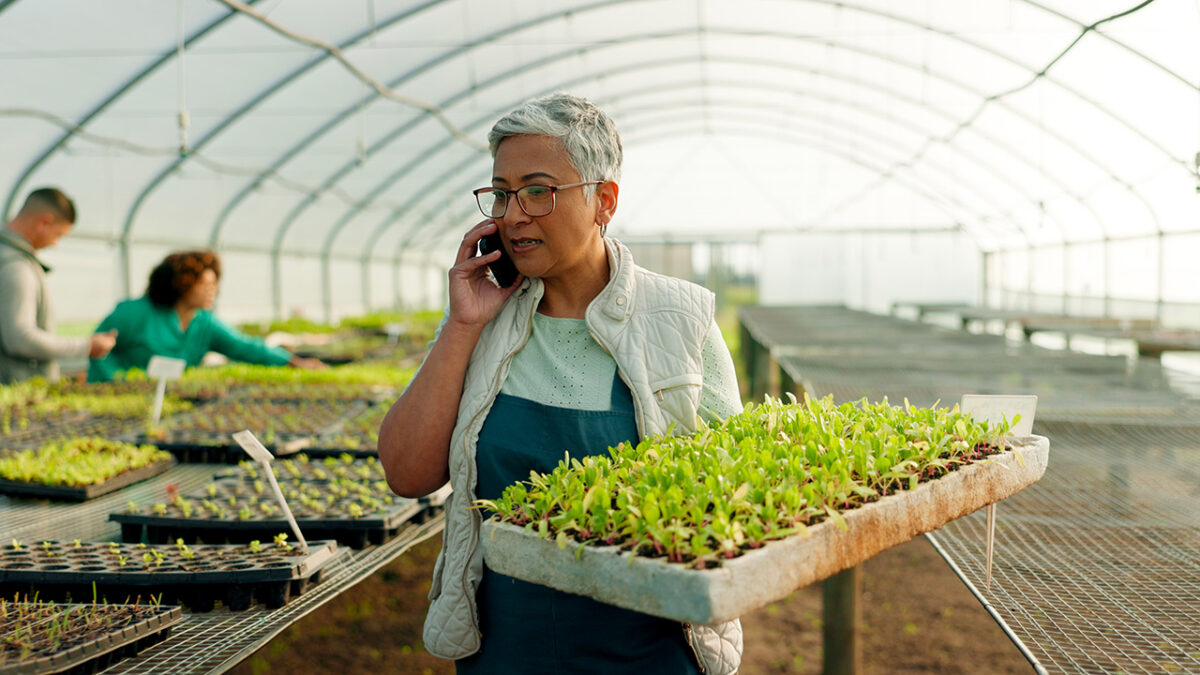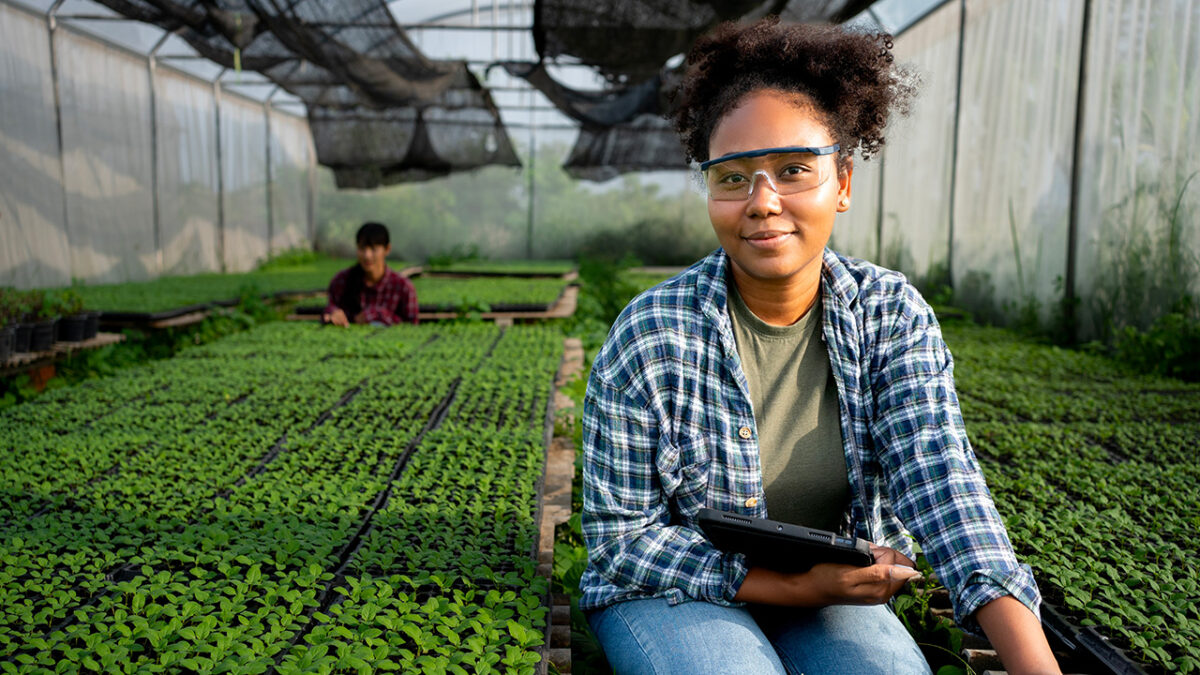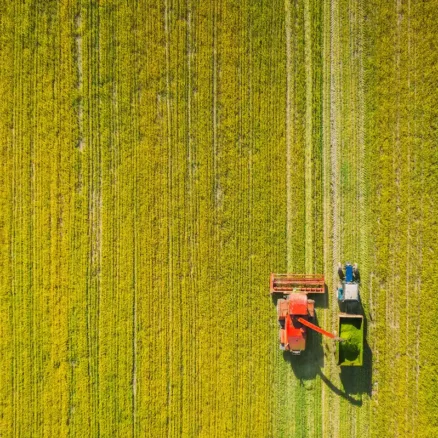Few systems are as exposed – or as influential – as agriculture. The AFOLU (Agriculture, Forestry and Other Land Use) sector contributed 13–21% of global anthropogenic greenhouse gas emissions between 2010 and 2019, making it a major driver of climate change and a sector on the frontline of its impacts.
Disruption is already here and being felt across the agricultural sector. Drought is diminishing cocoa yields in West Africa, coffee farms are moving to higher elevations and pests are affecting orange crops. Wine grapes are ripening earlier, while key row crops like corn, soy and wheat face growing exposure to heat, drought and extreme weather. Though some regions have experienced short-term gains, the broader trend signals increasing climate-related risks. At the same time, pressures such as soil degradation, water scarcity, and biodiversity loss are straining the resilience of agricultural systems
While many companies have made strong sustainability commitments, implementing them at scale remains a challenge. In a 2024 Quantis survey of over 600 food and beverage professionals, only 30% said they were confident their companies would meet their climate targets by 2030.
One of the biggest hurdles is shifting expectations. The Greenhouse Gas Protocol’s Land Sector and Removals Guidance (LSRG) is poised to become the gold standard for measuring, reporting and claiming land-based emissions and removals. But publication delays and lack of clarity on what the new guidance will entail has left companies navigating uncertain waters.
With the LSRG (now expected in Q4 2025) set to raise the bar for measurement, monitoring and traceability in scope 3 reporting, companies will face new challenges – but also new opportunities – to take credit for sustainability efforts in their supply chains.
Hesitation is understandable, especially when return on investment depends on aligning with evolving standards. But the urgency for climate action leaves no time for delay. Companies can – and should – get a head start by engaging their supply chains and investing in traceability now.
In this article, we unpack what’s already clear in the LSRG, what’s still evolving and what businesses – particularly in agriculture – can do today to lead.
GHGP LSRG: What’s settled vs. what’s still evolving
The 2022 draft of the Greenhouse Gas Protocol’s Land Sector and Removals Guidance (GHGP LSRG) doesn’t just raise expectations – it sets a new foundation. For the first time, companies have a science-backed framework to consistently account for land-based emissions and removals across their value chains. Here’s what we know:
What’s settled:
Several core principles are already locked in:
- Land-sector emissions must be fully accounted for. That includes emissions from land use change (e.g., deforestation, land occupation) and land management (e.g., livestock, fertilizer use and soil carbon loss).
- Removals are now included in corporate inventories. This means that removals will be recognized as a valid mitigation lever within the broader mitigation hierarchy. It encourages companies to pursue actions in their supply chains that reduce emissions and enhance carbon sequestration.
- Inventory accounting is mandatory for Scope 3 reporting. Companies must consistently include land emissions and removals in their value chain inventories.
- Intervention accounting can be reported separately to support internal decision-making – but it’s not a replacement for inventory reporting.
As Alejandra Bosch of the GHG Protocol puts it:
The goal of an inventory is to accurately represent the magnitude of emissions and removals – because inventories are a tool to inform decisions and drive action.”
What’s still evolving:
Some critical elements – particularly around traceability and implementation – are still in motion as part of the GHGP’s Actions and Market Instruments workstream. Here’s what’s still evolving:
- Physical traceability will be required to claim emissions or removals at the farm level. Acceptable approaches (e.g., identity preservation, segregation or mass balance) are still under review.
- Open technical areas that need clarification include:
- How to credibly quantify and report removals across diverse agricultural systems
- How to allocate emissions, removals, and reversals across time, crops, and actors
- What counts as sufficient monitoring and data quality for SOC removals reporting
- Agricultural leakage
- GHGP is still determining if and how agricultural leakage should be quantified and treated to best ensure that companies capture system-wide impacts of agriculture.
Despite these remaining questions, companies don’t need to wait for version 1.0 or 1.1 to get started. Early movers who act now – and build traceability into their operations from the ground up – will be better positioned to lead on climate, claim verified scope 3 impact and stay ahead of rising compliance expectations.
How companies can take action
1. Understand the risks and opportunities within your supply chain

Effective climate action starts with supply chain visibility, which includes mapping key sourcing regions based on volume, impact and strategic importance. It’s imperative to identify where climate risks are highest – and where the greatest opportunities exist to reduce emissions and build resiliency. Tools like eQosphere and Indigo Ag’s Field Explorer can help pinpoint where regenerative practices or regional shifts will deliver the most value.
This is smart risk management. With extreme weather, trade disruptions and labor instability already affecting global supply chains, visibility enables proactive decisions – from shifting sourcing to supporting grower adaptation or updating procurement strategies. It helps companies avoid disruption, protect margins and secure supply.
The stakes are rising fast: global production of staple and non-staple crops could decline by up to 35% by 2050 due to escalating environmental stressors. Understanding where your exposure lies – and acting early – is essential.
At the same time, this kind of insight lays the groundwork for traceability – a requirement under the upcoming GHGP LSRG to credibly claim Scope 3 reductions and removals. Companies that build this foundation now will be better positioned to act, build resiliency and stay ahead of evolving standards with confidence.
2. Build the business case for your leadership team

Beyond emissions, sustainable agriculture can strengthen a company’s overall sustainability strategy. Regenerative practices improve water quality, support yields and build long-term supply resilience – reducing exposure to future shocks. These co-benefits are measurable and communicable today, even as removals accounting continues to evolve.
To secure real value, investment decisions must be tied to the value chain. Finance and sustainability teams need to align on the business risks: climate-driven disruptions are already pushing up costs and constraining supply. Volatility in yields and prices is no longer hypothetical – it’s impacting margins now. Leaders who act early will be better positioned to adapt and protect supply continuity.
Companies can start by engaging farmers on practices with clear emissions benefits – like balancing nitrogen inputs – where accounting rules are more established and impacts can be reported today with low compliance risk.
Projects should demonstrate how they reduce emissions, strengthen supply security and deliver reliable performance – not just in theory, but in practice.
3. Empower procurement to engage suppliers and farmers

One of the biggest barriers to climate adaptation is supply chain complexity. In fact, 42% of companies cite supply chain opacity as their top challenge to integrating sustainability. Without transparency, it’s hard to assess risk, enforce standards or meet regulatory demands.
But complexity is also a strategic opportunity. Companies that invest in traceability and resilient sourcing gain a competitive edge – improving visibility, reducing risk and staying ahead of evolving expectations.
To seize this opportunity, sustainability teams must enable procurement with the right tools, data and decision frameworks. That means:
- Creating sourcing playbooks with region-and crop-specific guidance on sustainable practices
- Embedding climate KPIs into supplier scorecards, RFPs and contracts
- Equipping teams with tools like emissions dashboards, supply shed maps and risk models
- Integrating sustainability into procurement systems
- Training buyers and category leads to engage suppliers and act on sustainability data
Where supplier traceability is limited, the supply shed model helps define actionable regions and supplier groups. Backed by the Value Change Initiative and SBTi, it allows companies to deploy value chain interventions – like regenerative practices or fertilizer optimization – while maintaining alignment with Scope 3 targets.
Tier 1 suppliers and cooperatives play a critical role in scaling these efforts, and Indigo Ag’s tools can support identification, engagement and impact tracking.
When equipped with the right tools, training and incentives, procurement becomes one of the most powerful engines for climate and broader resilience outcomes in the business.
To ensure follow-through, procurement teams should track progress – volumes impacted, emissions reduced, co-benefits delivered – and tie these results to supplier performance and sourcing decisions.
4. Start investing in action at the field – and collect data from the start

To be ready to report on land-based emissions, ensure security of supply and make measurable progress once the LSRG is finalized – companies should begin building a sustainable crop supply now. Most want to see greater adoption of regenerative agriculture across their supply chains, but achieving that shift depends on farmer buy-in. Even small-scale action today can create meaningful momentum.
Pilots are a powerful way to start. Small programs generate success stories and real-world data that other farmers can build on. They also give companies valuable insights into on-the-ground realities – from farmer pain points to what it takes to build trust and drive adoption. Despite the clear benefits of regenerative practices, adoption remains low due to a mix of financial, social and cultural barriers. Early examples of success can help overcome resistance, inform better engagement strategies and accelerate broader adoption.
Scaling sustainable sourcing is a long-term effort – and it starts in the field. Practices will need to be adapted region by region, farm by farm. What works in one context may fail in another. Allowing space for experimentation and learning is essential for creating durable, scalable supply chain change. This isn’t a switch companies can flip once the rules are finalized – it’s work that needs to begin well in advance.
Conclusion
Despite uncertain reporting standards, companies have many ways to get started making progress in their agricultural supply chains. While the process may be complex, the proposed changes represent an opportunity for companies to make a deep impact on their procurement decisions and improve supply chain security.
For companies rooted in agriculture, the path forward is clear: Acting now to embed traceability, resilience and land-based action into supply chains isn’t just about staying ahead of GHGP LSRG requirements – it’s about securing the future of their business. The companies that lead this shift will shape the future of agriculture in a way that works better for business and planet.
We’re your full-service partner for the transformational journey. Our strategic advisors are equipped to guide you at every point along the way.










